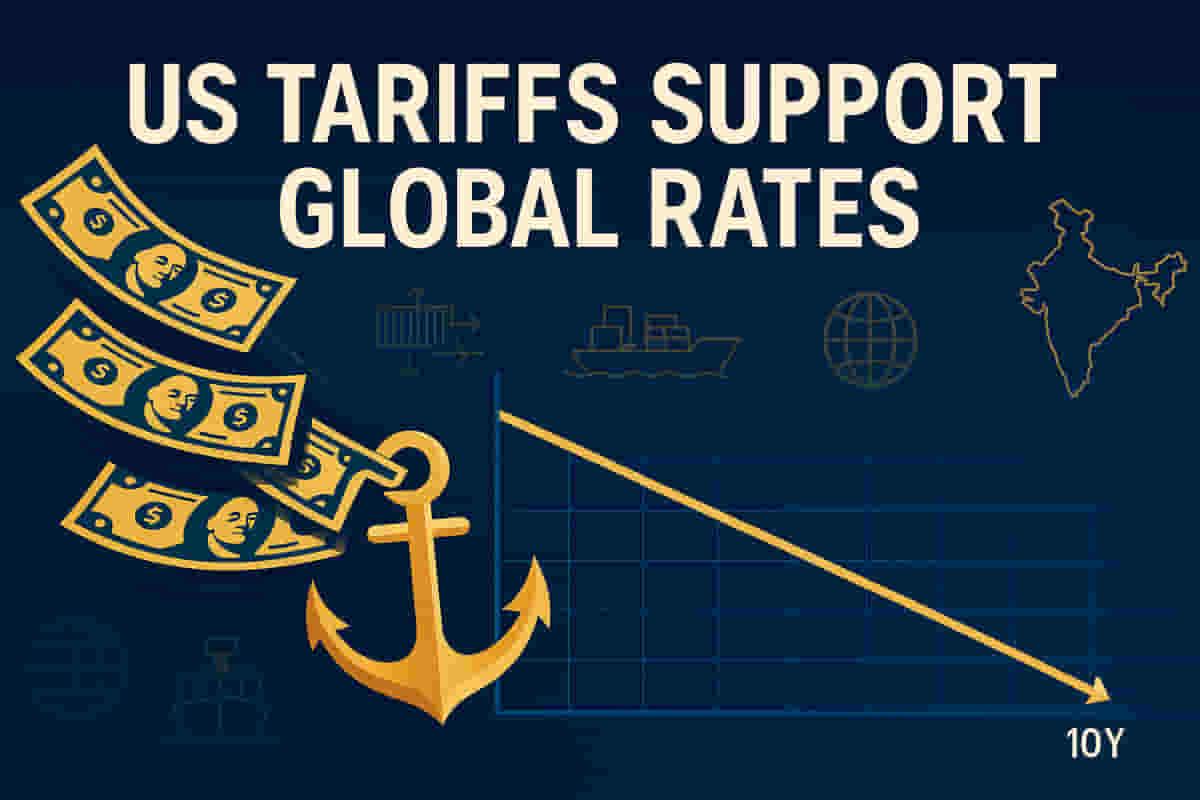US Tariff Revenue A Crucial Anchor for Global Bond Yields; India Faces Potential Impact
Economy
|
30th October 2025, 9:11 AM

▶
Short Description :
Detailed Coverage :
Investors are closely watching the expected $300 to $350 billion in tariff revenue that the US government is projected to collect this year. This anticipated inflow is a major factor currently stabilizing long-term interest rates, especially the 10-year US Treasury yield, which has remained in the mid-4% range in early 2025. This stability is partly attributed to the assumption that the US government's finances will be bolstered by tariffs, reducing its need to borrow significantly from elsewhere and giving bond investors confidence.
However, if these tariff revenues do not materialize as expected, it could significantly alter the financial landscape. Jahangir Aziz, Head of Emerging Markets Economic Research at JP Morgan, stated that the removal of tariffs without a suitable replacement would lift one of the largest anchors for the 10-year Treasury rate, potentially leading to greater volatility.
Impact: A loss of expected tariff revenue could lead to higher US bond yields. This would make borrowing more expensive globally, potentially strengthen the US dollar, and draw capital away from emerging markets. For India, this could mean increased pressure on the Indian Rupee, higher borrowing costs for businesses, and a less attractive environment for foreign investors seeking long-term commitments. Rating: 7/10
Difficult Terms: - Tariff Revenue: Money collected by a government from taxes imposed on imported goods. - Bond Yields: The return an investor earns on a bond, typically expressed as an annual percentage of the bond's face value. - 10-year Treasury yield: The interest rate paid on US government debt that matures in 10 years. It's a benchmark for many other interest rates. - Fiscal deficits: The difference between government spending and its revenue in a given year, indicating how much the government needs to borrow. - Emerging markets: Countries with economies that are in the process of rapid growth and industrialization, such as India, Brazil, and China. - Capital flows: The movement of money for investment into and out of a country.